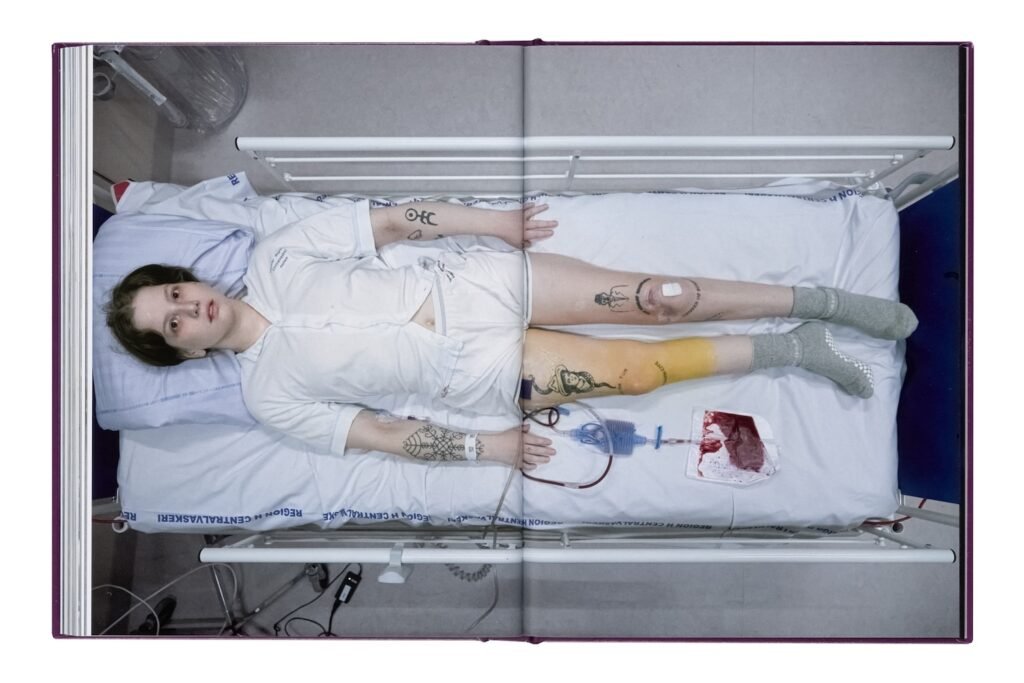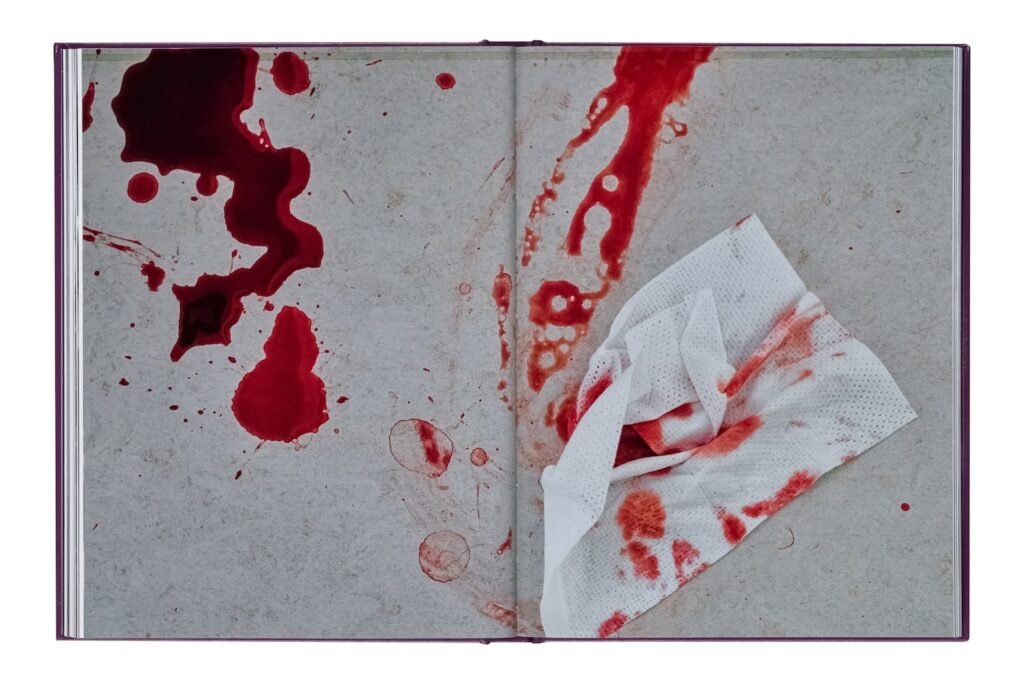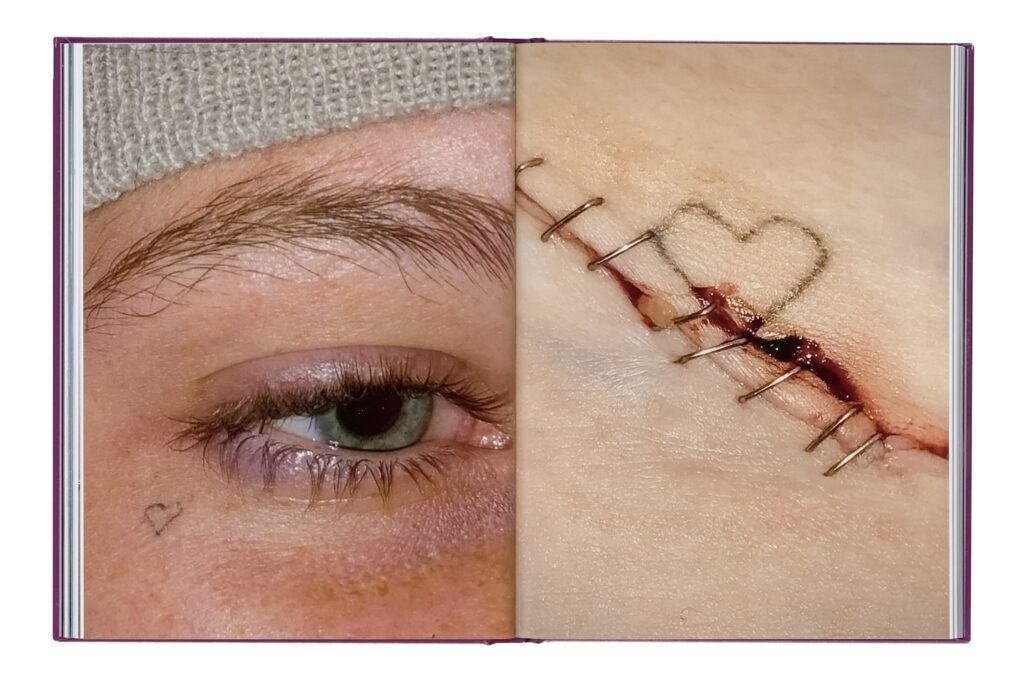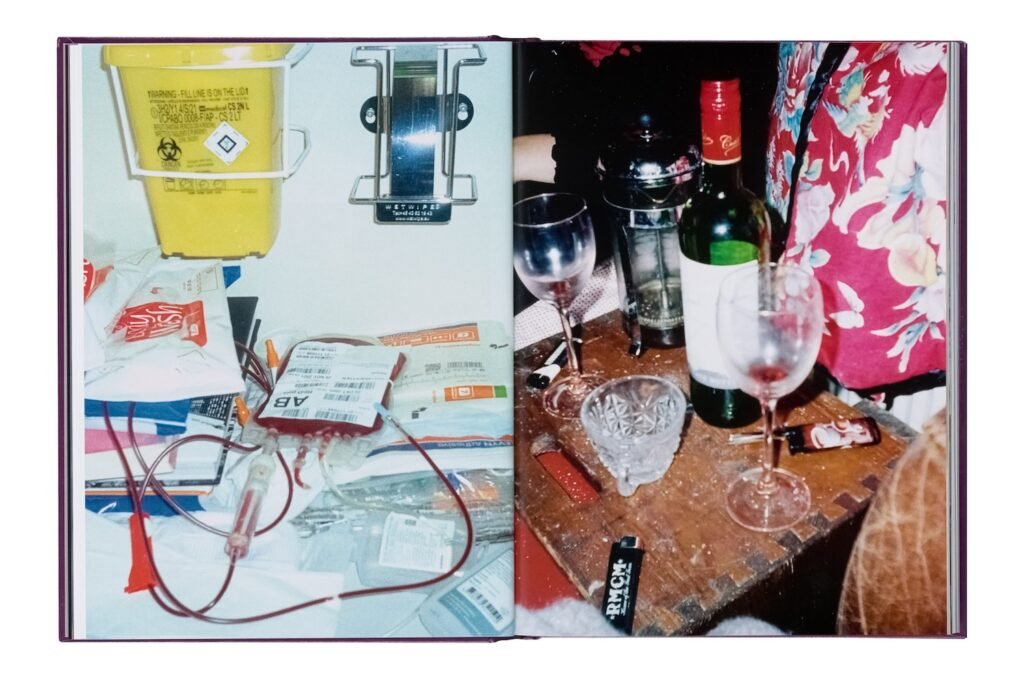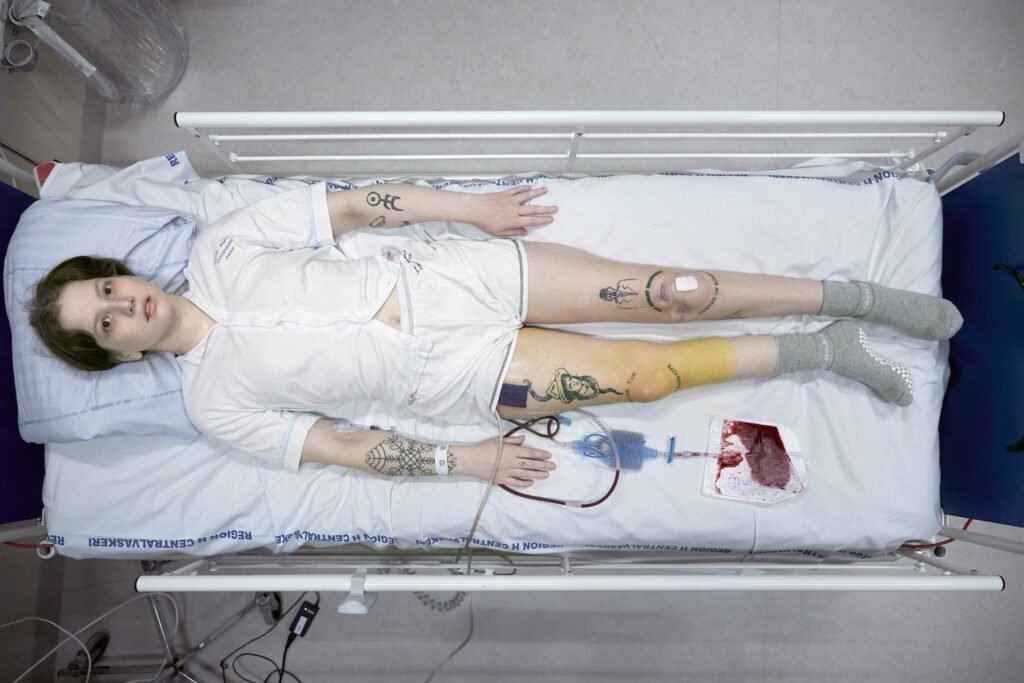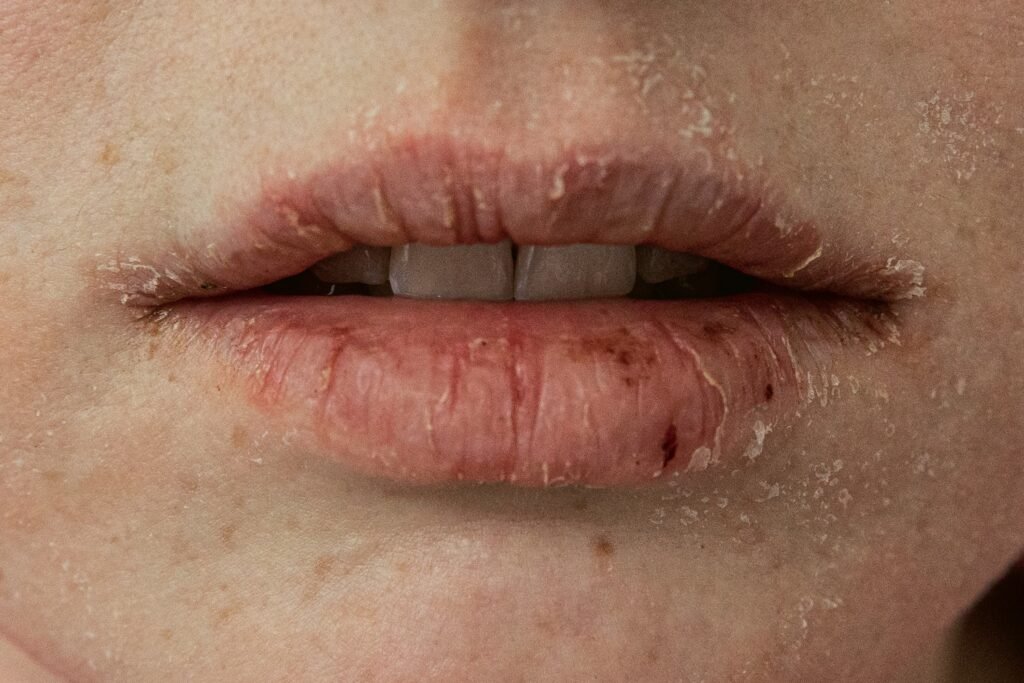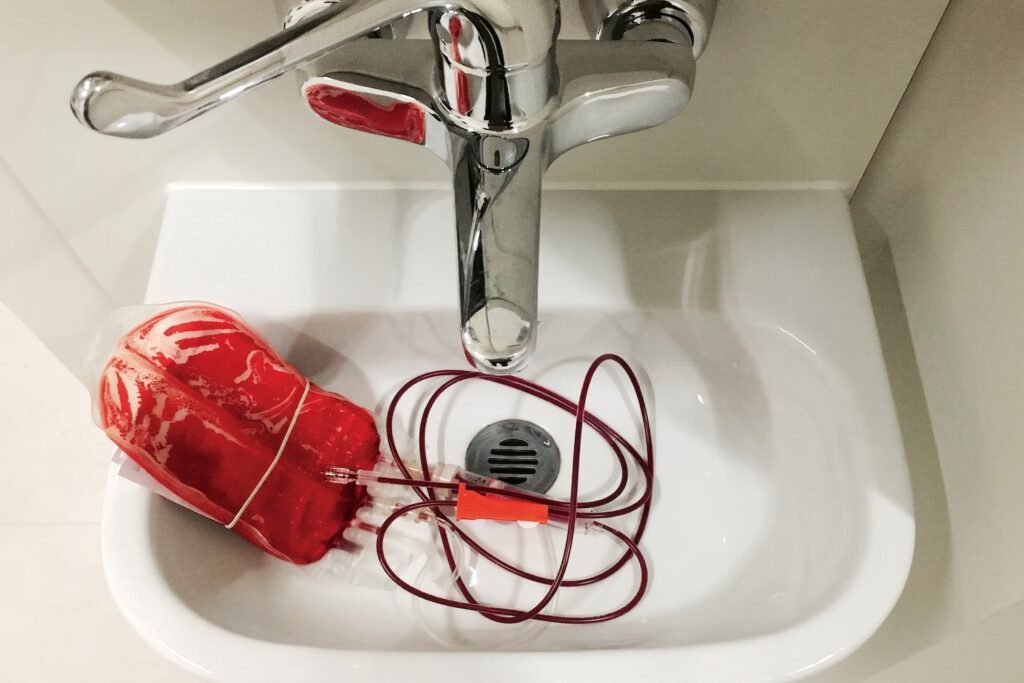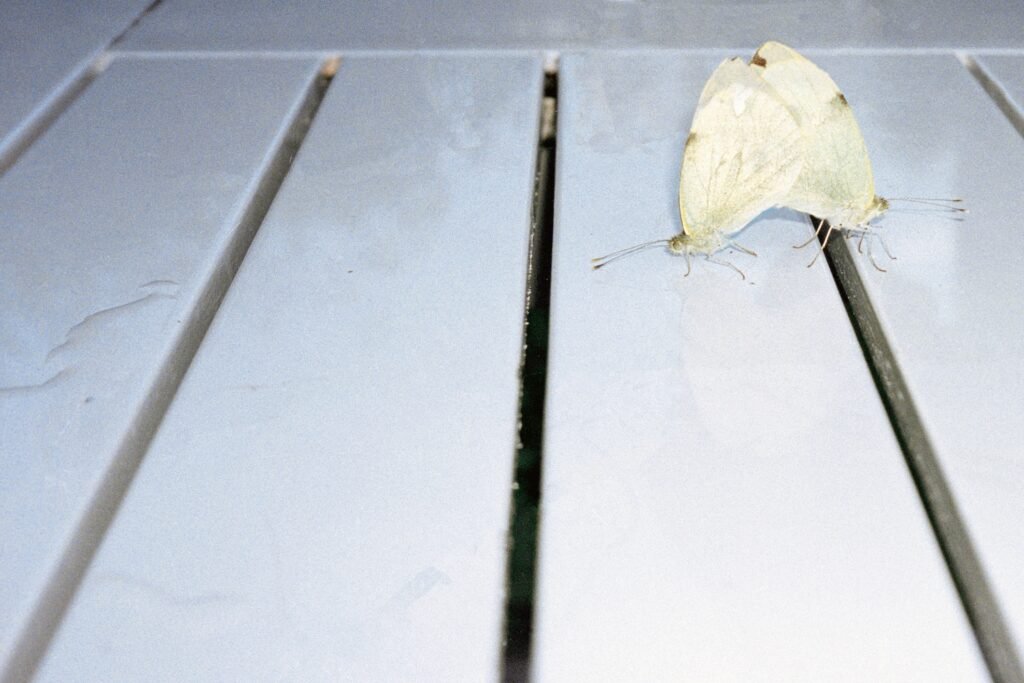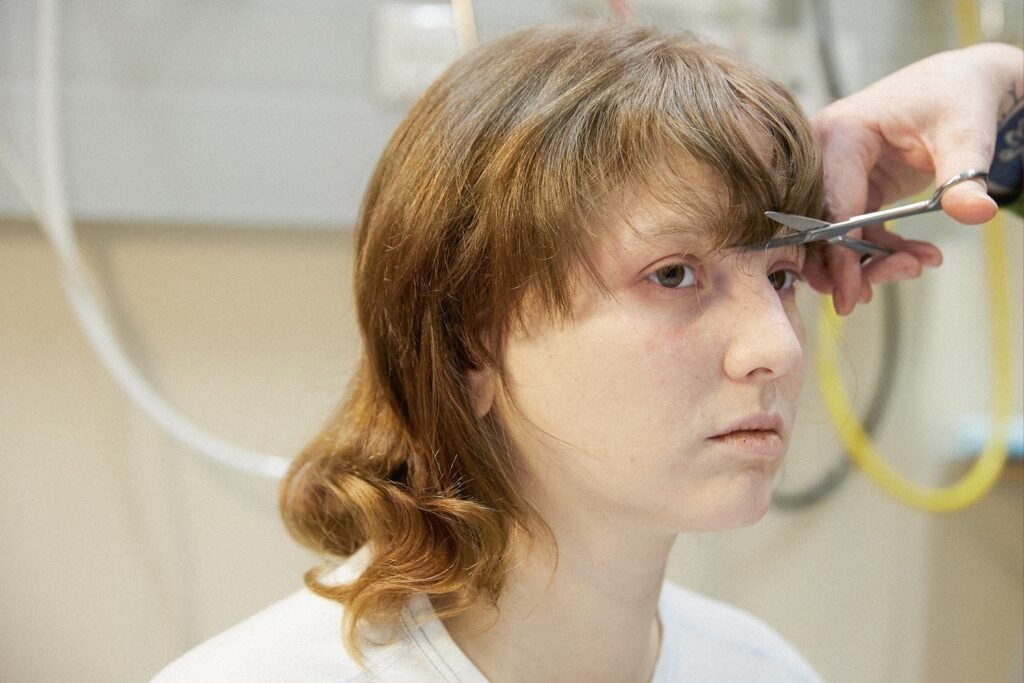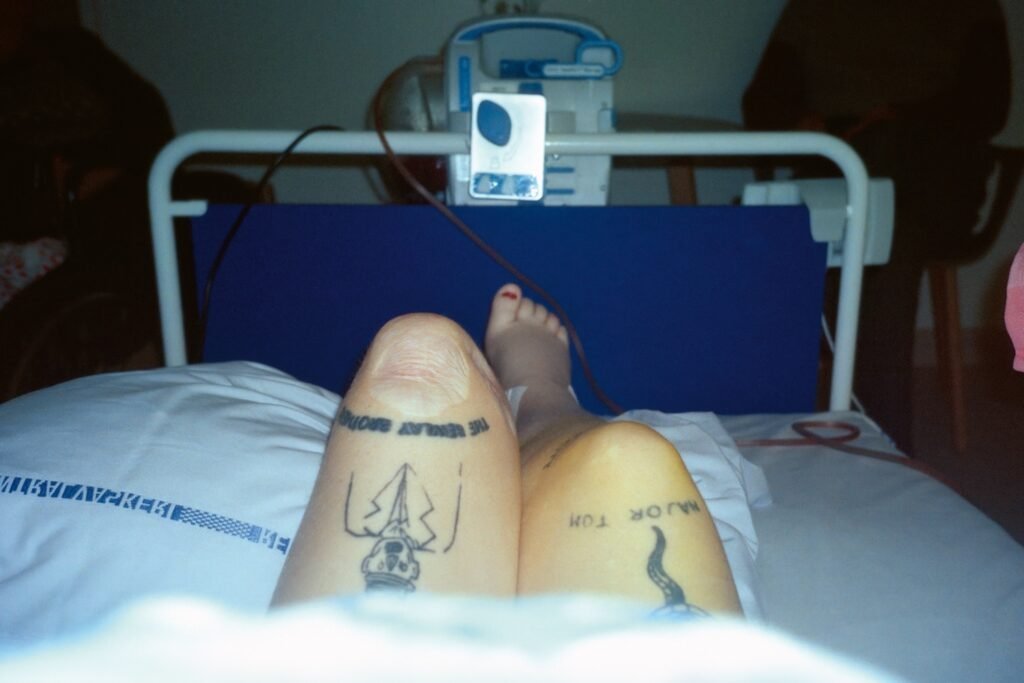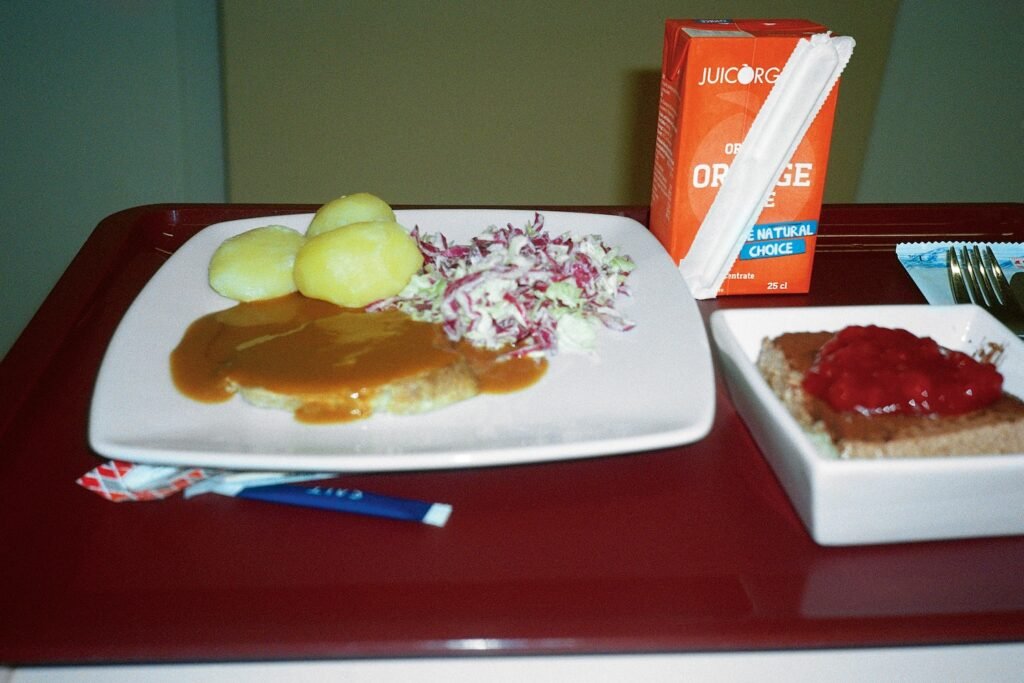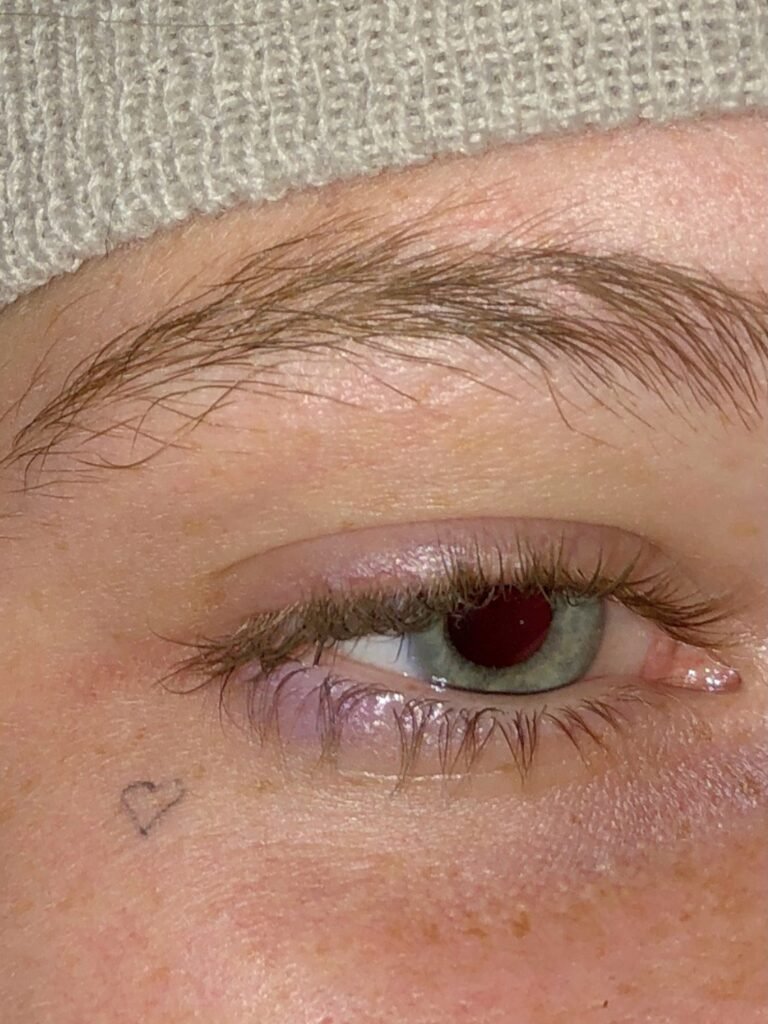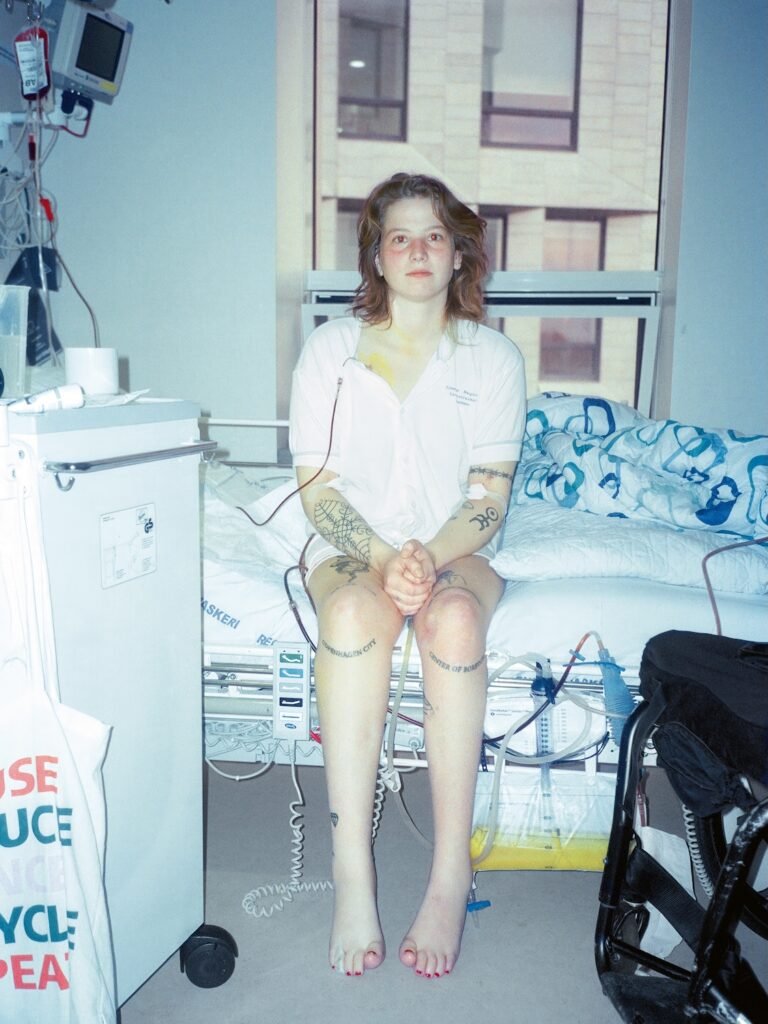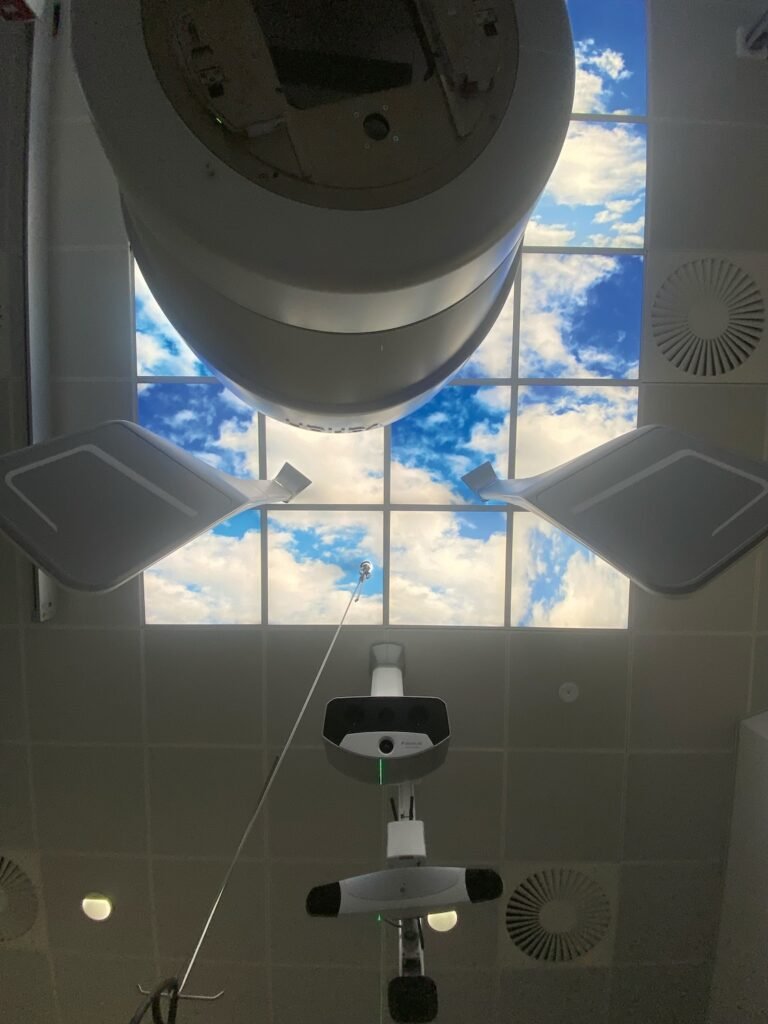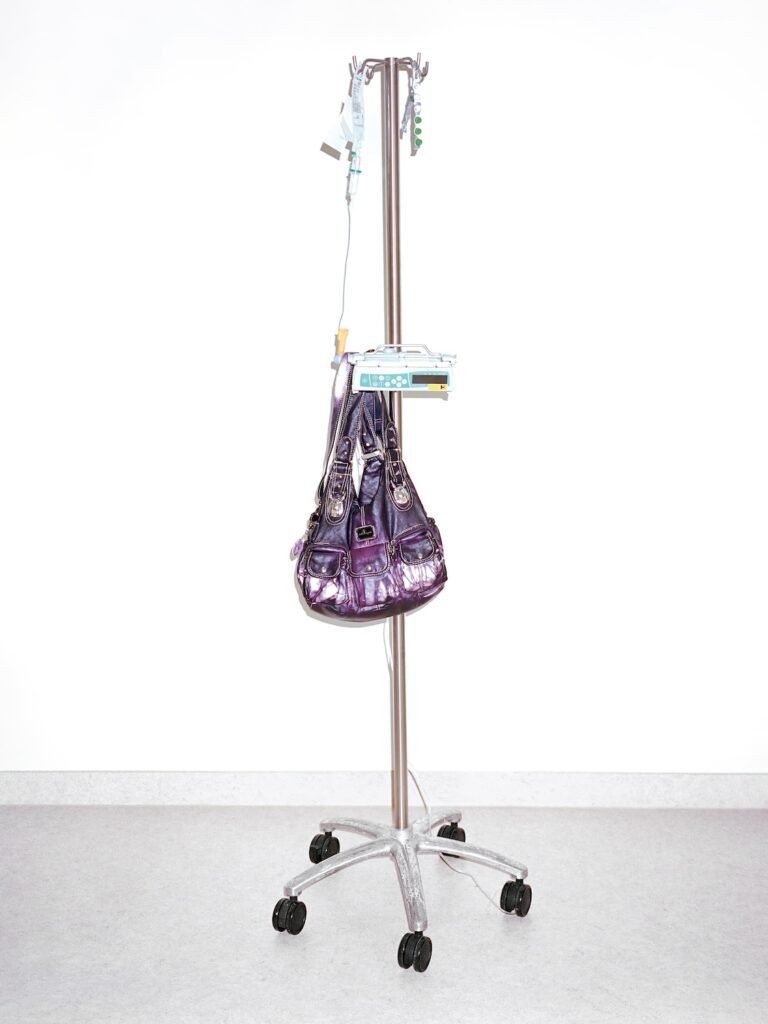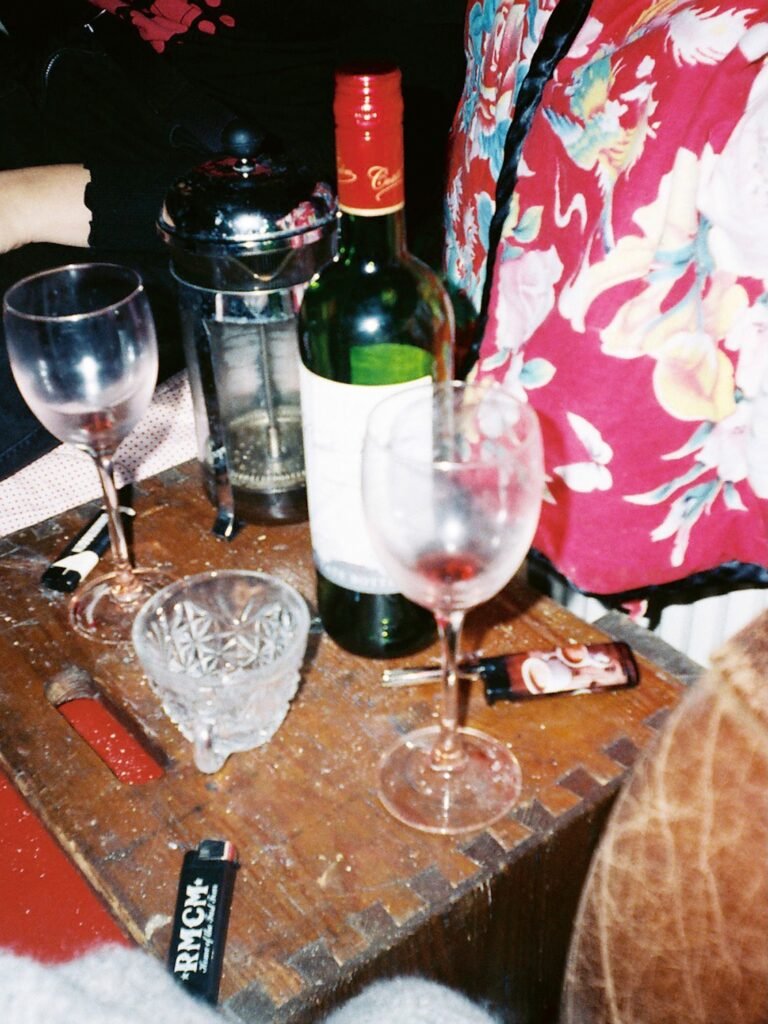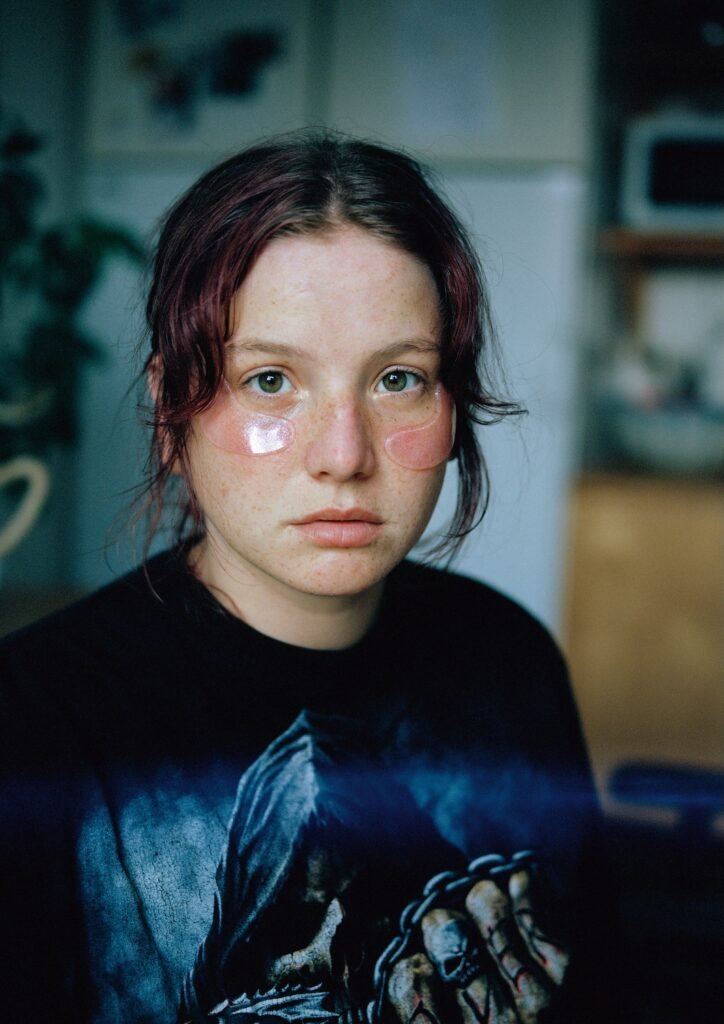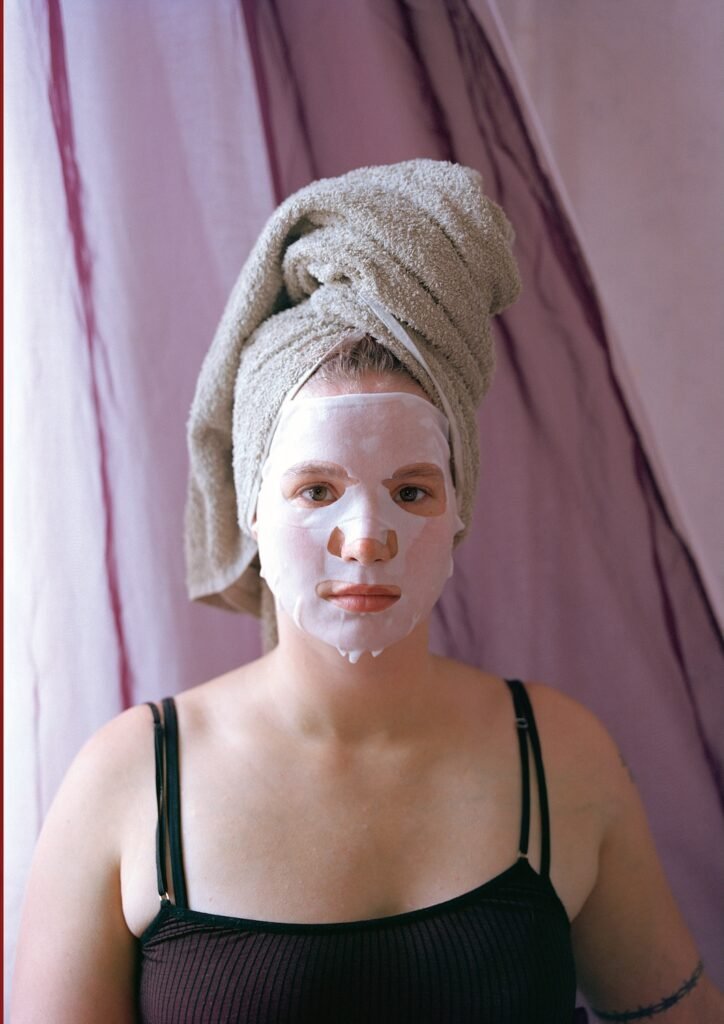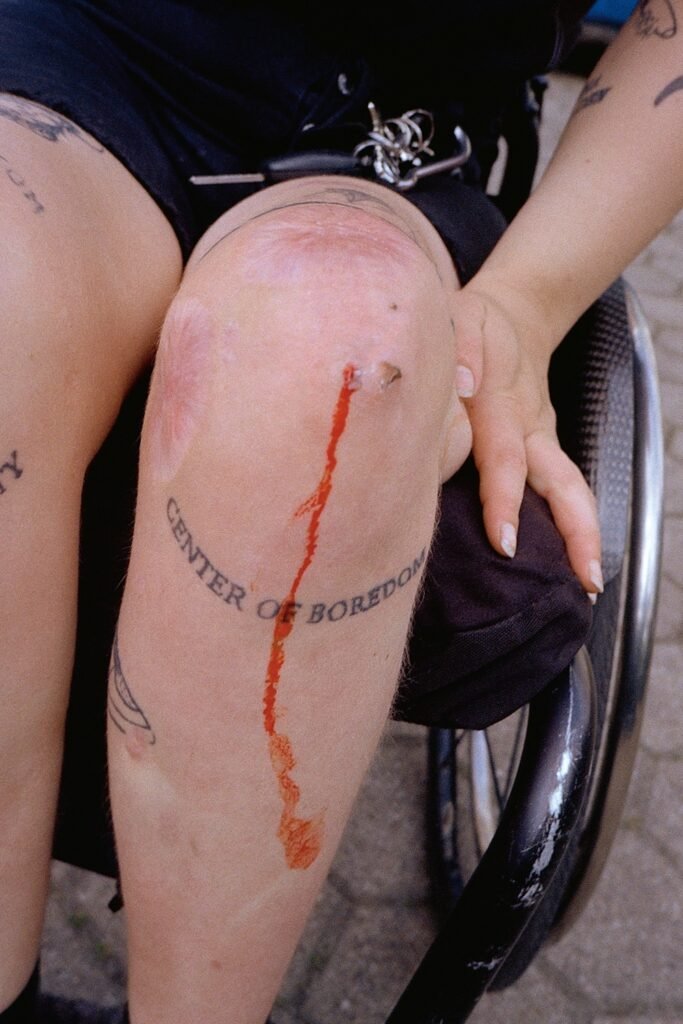Frida Forever by Frida Lisa Carstensen Jersø: The Aesthetics of Vulnerability and the Iconographic Cartography of the Sick Body
In the contemporary landscape of authorial photobook publishing, Frida Forever by Frida Lisa Carstensen Jersø–published by Disko Bay–stands out as a work of rare visual and conceptual intensity. This is not merely an autobiographical photobook, nor a therapeutic narrative of illness: Frida Forever constitutes a critical and iconographic device that deconstructs and reformulates the ways in which photographic images can articulate the experience of a vulnerable, medicalized, and chronically ill body.
Through a sequence of self-portraits, performative mise-en-scènes, and documentary-style images, Jersø develops a visual language that avoids any conventional aestheticization of pain, opting instead for a hybrid and unsettling syntax, capable of alternating the raw and the playful, the symbolic and the explicit, the wound and the mask. In this sense, the book does not simply represent illness—it stages it, interrogates it, fragments it, and reassembles it in a stratified manner that is simultaneously affective, clinical, and political.
The Body as Iconic Space and Topography of Trauma
A central element of the project is the assumption of the artist’s own body as a visual archive and epistemological surface. The images in Frida Forever do not merely document the body; they render it legible as both text and territory. Scars, metal implants, bandages, and tissue alterations become not just narrative elements, but constitutive components of a new figurative grammar, in which the body becomes landscape, map, and semiotic matter.
The iconography of pain proposed by Jersø resists any form of sentimentalism. The explicit—manifested through images of nudity, wounds, bodily fluids, and surgical devices—is never used for provocation or spectacle, but as a practice of truth and revelation. This choice not only challenges the historic invisibilization of disabled bodies within the Western visual discourse but also produces an ethical and ontological tension that directly implicates the viewer. The point is not to “look at” Frida, but to be questioned by her gaze—by her construction of herself as an active and critical subject of her own image.
Interrupted Temporality and Youth as a Liminal Condition
Another layer of complexity arises from the book’s reflection on time. If chronic illness implies a reconfiguration of temporality—marked by suspensions, recurrences, and interruptions—Frida Forever makes this alteration visible through a nonlinear montage that alternates hospital presents, the memory of the accident (which occurred in 2012 when Frida was fourteen), and a kind of personal mythology of interrupted youth. The transition from adolescence to adulthood—typically associated with emancipation and experimentation—is here superimposed on a prolonged stay within the non-places of clinical life: hospital rooms, waiting areas, operating tables, sterile corridors.
This disjunction generates a powerful visual dialectic between freedom and constraint, between the imaginaries of youth and the realities of trauma. Yet within this interstitial space, Jersø manages to extract a vital force, an iconic strength that does not deny suffering but traverses it. Photography, in this context, becomes not merely a tool of expression but a technology of the self, a practice of resistance, a gesture of ontological reclamation. It is no coincidence that many of the photographs feature performative postures or ironic disguises: these are symbolic strategies of control that re-stage an identity that is complex, resistant to both pity and heroism.
Disability, Visual Agency, and the Politics of the Gaze
In an era in which representations of disability are still often shaped by ableist narratives—oscillating between pity and inspirational rhetoric—Frida Forever asserts a position of radical otherness. Here, the body is not the object of the gaze but the subject producing the image. Jersø’s work is deeply situated within the lineage of feminist and crip art practices that, since the 1990s, have demanded a profound redefinition of visual grammars for non-normative corporeality.
The images in Frida Forever reject any claim to neutrality, locating themselves deliberately within the field of subjectivity. But this subjectivity is not closed in on itself; on the contrary, the book invites collective reflection on the cultural apparatuses that determine what may be shown, what is deemed worthy of visibility, and what is routinely erased or softened. Vulnerability, in this context, is not a condition to be overcome, but an epistemic position from which to reimagine the relationship between image, experience, and meaning.
Conclusion: Toward a Visual Pedagogy of Flesh
Frida Forever is, in every respect, a pedagogical work—not in a didactic sense, but in its capacity to operate as a critical threshold. Through an intense and layered photographic practice, Frida Lisa Carstensen Jersø constructs a visual discourse that interrogates the body, illness, trauma, gender, and representation. With its visual density and refined formal awareness, the book goes far beyond a personal story: it opens a complex and profoundly political discursive space.
At a time when the visible is often subordinated to dominant aesthetic regimes—favoring smoothness, performance, and optimism—Frida Forever emerges as a dissonant gesture, one that restores to photography its disturbing, critical, and testimonial potential. Not merely a visual diary, then, but an embodied manifesto of the possibility to inhabit and transform—even through image—the uncertain and opaque territories of suffering flesh.
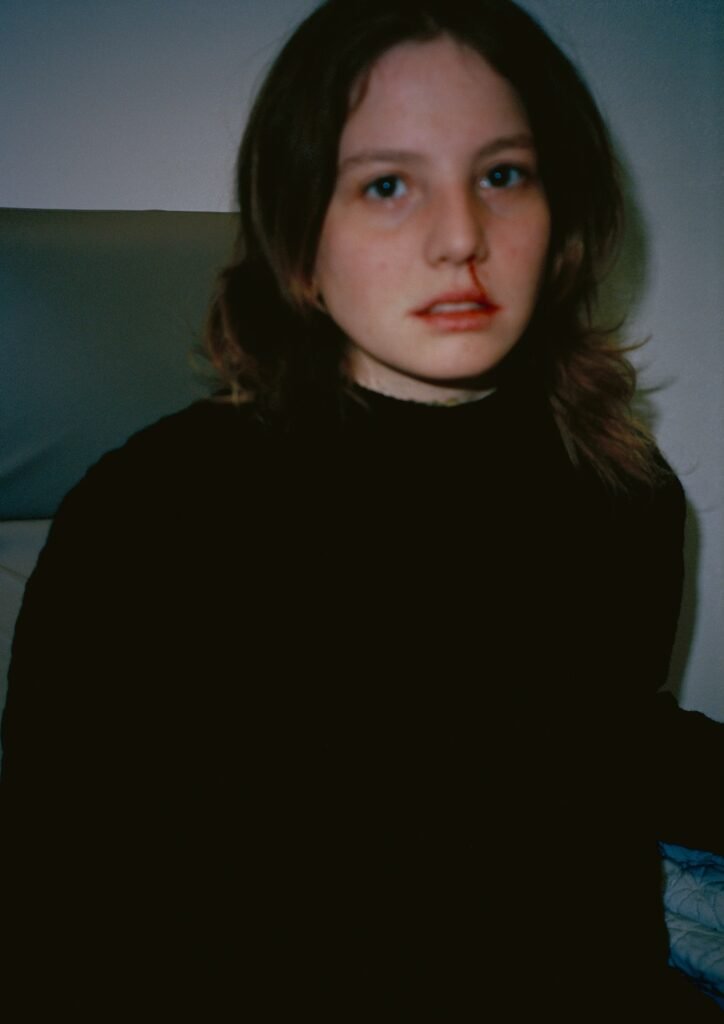
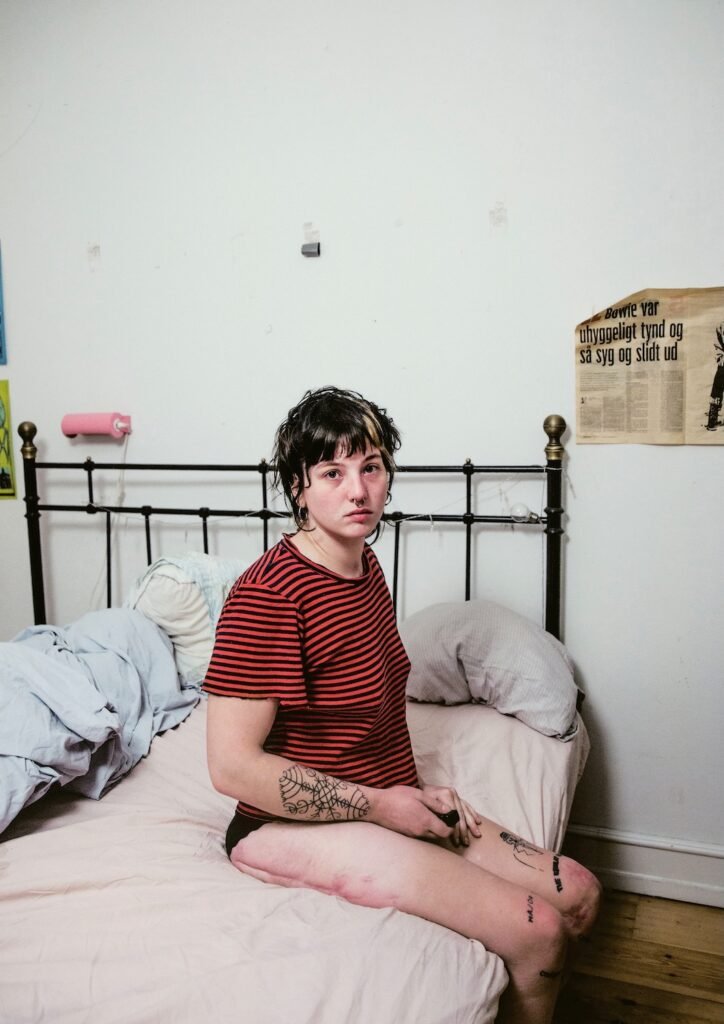
Frida Lisa Carstensen Jersø (b. 1997) is a Danish artist living and working in Copenhagen. She holds a Bachelor of Fine Art Photography from HDK Valand in Gothenburg, Sweden. Her work largely revolves around the body and its limitations with a particular interest in exploring the sick body, ableism, and societal perceptions of these topics. Through photography, she examines the physical and emotional aspects of vulnerability and strength. Jersø have exhibited at venues such as Röda Sten Konsthall in Gothenburg and Frederiksborg Castle in Denmark, and have participated in Artists’ Autumn Exhibition 2024 and several other group exhibitions around Scandinavia. Jersø is a part of the European Futures Talent 2025.


